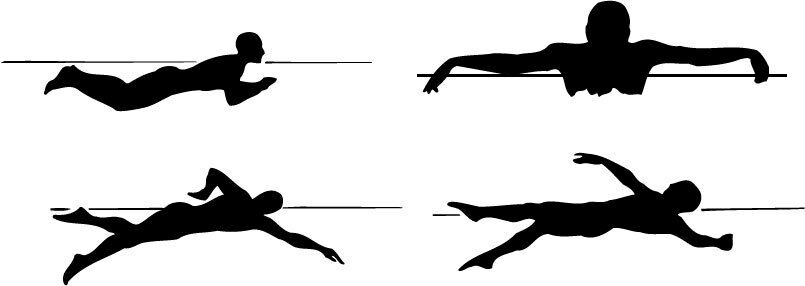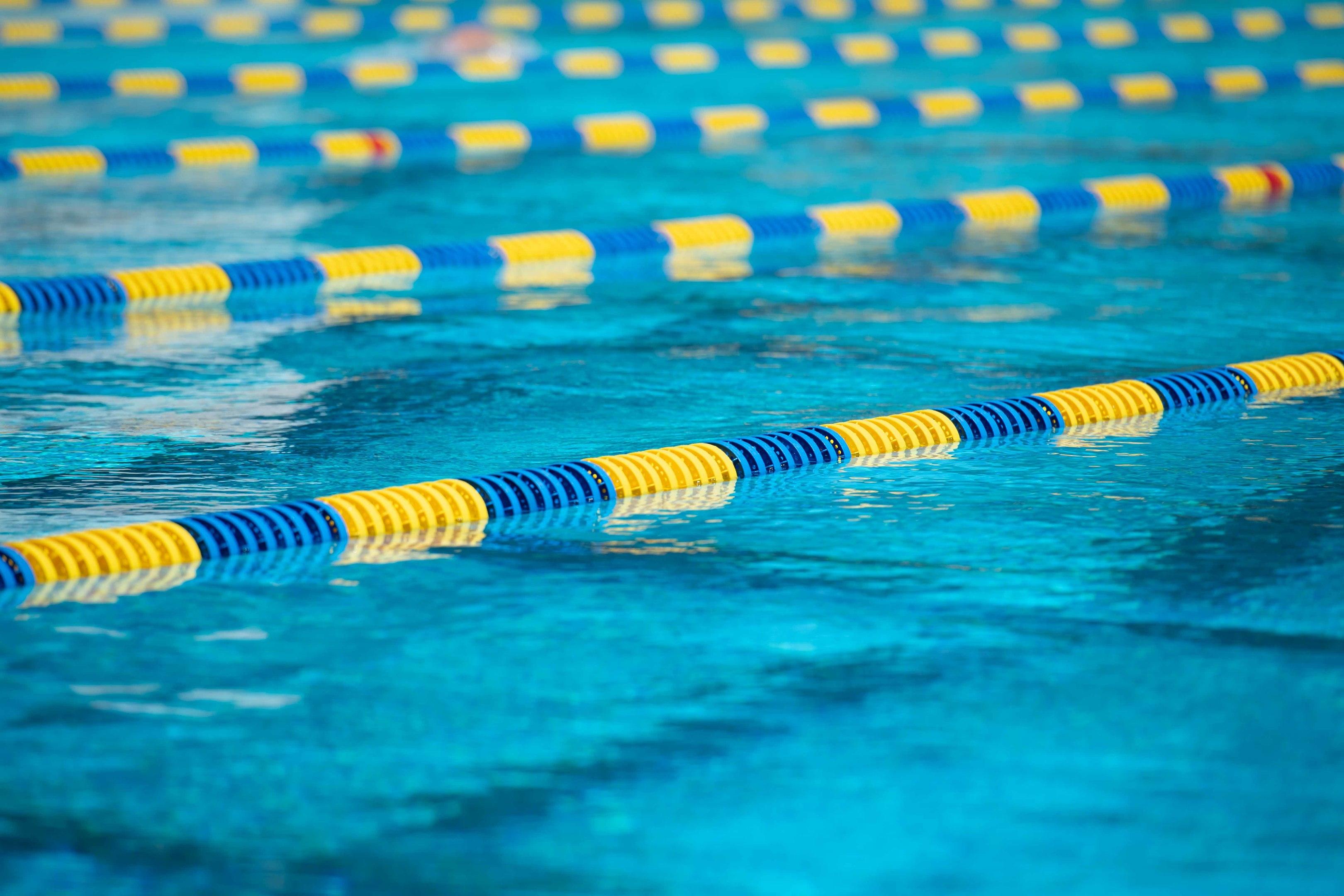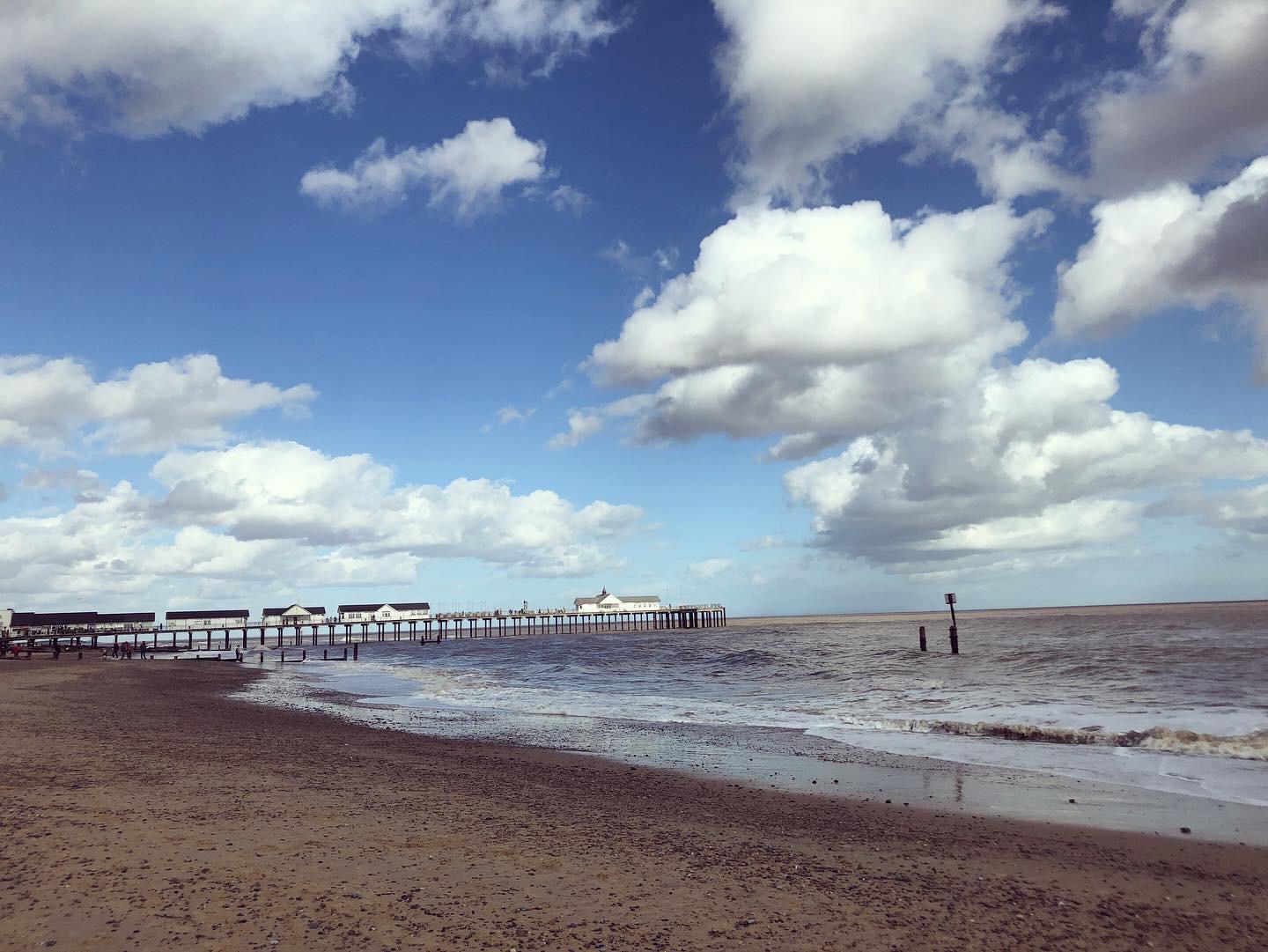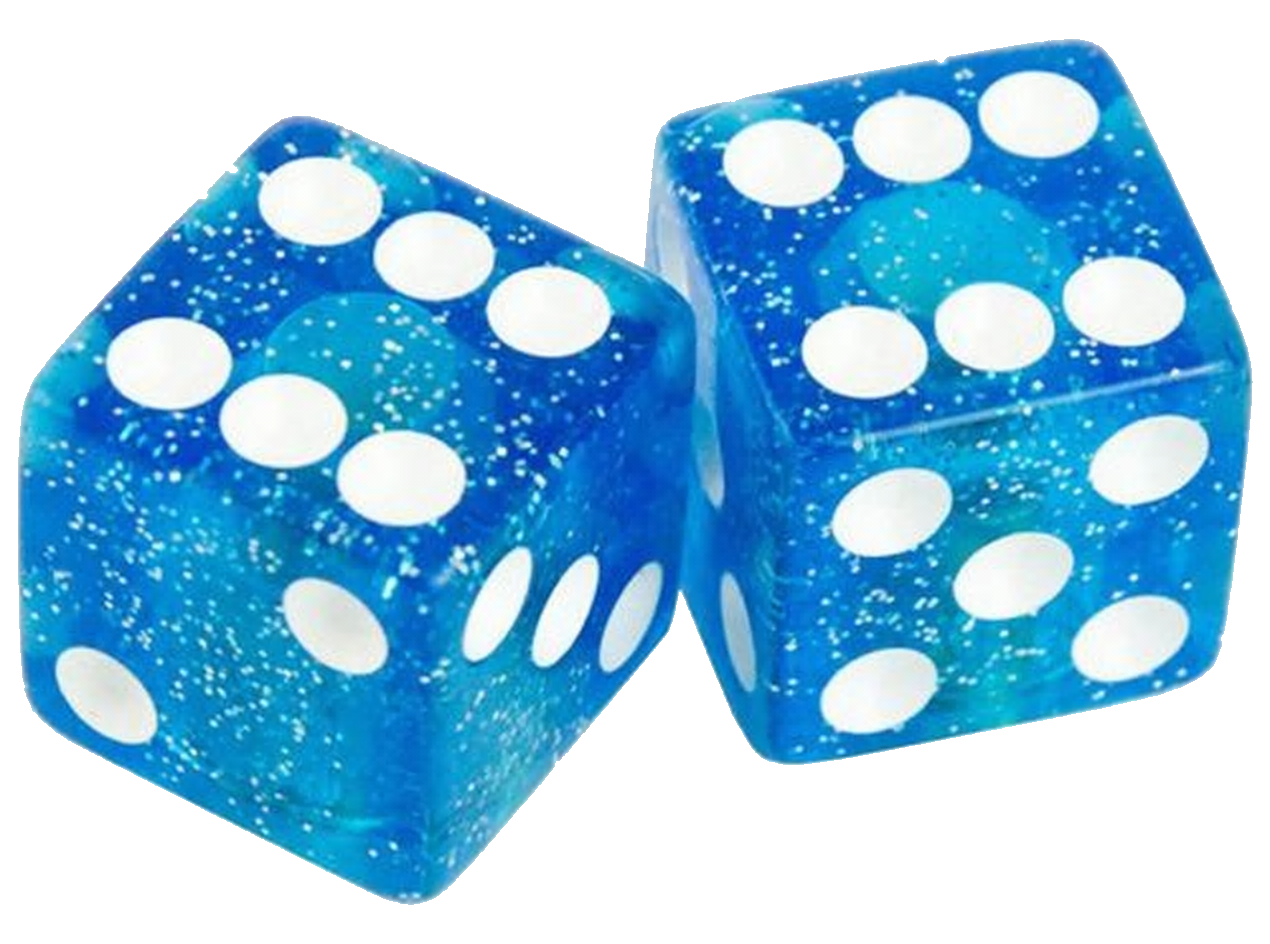There are four strokes in swimming. You’ll find technique information on this page, including a short video clip of each stroke.
Front Crawl
Front Crawl is considered the fastest and most efficient swimming stroke. In competitive swimming, it is often referred to as Freestyle, although strictly speaking, this means ‘use any legal stroke’; front crawl is nearly always chosen as it’s the fastest.
Often, Front Crawl is the first stroke to be taught. To gain a better understanding of how Front Crawl should be executed, I have highlighted the four critical phases of the stroke – Body Position, Leg Kick, Arm Rotation, and Breathing – below:
Body Position
A flat body position will be held at the surface of the water, with the head submerged and eyes looking forward at a 45º angle.
Leg Kick
Front Crawl leg kick is also known as ‘flutter’ kick. There are six key points to remember when kicking: straight legs, pointy toes, kick from your hips, kick up and down, relax your ankles, and kick quickly to create small splashes.
Arm Rotation
The arm rotation on Front Crawl can often be described as a ‘windmill’ action as the arms work opposite to one another. Important points to remember about the arm rotations are: the pull should start from in front of you; one arm at a time, pull down to your hip; as your hand reaches the hip, you must bend your elbow to ensure it exits the water first; as the arm recovers over the water you must reach forwards and enter with your fingertips.
Breathing
When learning to swim, breathing can be one of the hardest things to master. You must be able to exhale whilst your head is in the water to ensure you can inhale quickly as your mouth and nose exit the water. Breathing on Front Crawl is done to the side of the body and is recommended to be bilateral, meaning that you use both sides to turn and take a breath, for example, by breathing every three strokes.
Other Skills Related to Front Crawl
Push and Glide
- Place one or both hands on the wall behind you.
- Put your feet up against the wall.
- Push hard against the wall and let go of the side.
- Bring your arms in front of your body, outstretched in a streamlined position.
- No kicking.
Underwater Phase
- Push off the wall in a streamlined position.
- Keeping your head down, dolphin kick towards the surface.
- As your body reaches the surface, pull down into the front crawl stroke with a flutter kick.
- Minimum of 2 strokes before the first breath.
Tumble Turns
- At roughly an arm’s length from the wall, use the last arm pull to pull close to the wall.
- Tuck your head down and lift your knees towards your chest to begin a forward roll.
- As your body rolls over, extend your arms.
- As your feet hit the wall, push hard into a streamlined position.
Backstroke
Backstroke is the only stroke of the four swum on the back. One of the advantages of backstroke is that breathing throughout the stroke is easy. However, one disadvantage of this stroke is that you are unable to see where you’re going. To gain a better understanding of how backstroke should be executed, I have highlighted the four critical phases of the stroke – Body Position, Leg Kick, Arm Rotation and Breathing – below:
Body Position
A good body position will be held at the surface of the water, with the ears submerged and the eyes looking straight up.
Leg Kick
Backstroke leg kick, like Front Crawl, is also known as a ‘flutter’ kick. There are six key points to remember when kicking: straight legs, pointy toes, kick from your hips, kick up and down, relax your ankles, and kick quickly to create small splashes.
Arm Rotation
The arm rotation on backstroke, again, can often be described as a ‘windmill’ action as the arms work opposite to one another. Important points to remember about the arm rotations are: the pull should start from a streamlined position; one arm at a time, pull down to your hip, bending your elbow as you catch the water; when your hand reaches the hip, you must exit the water with your thumb first; as the arm recovers over the water you should twist your wrist to enable your little finger to enter the water first; the arm should brush past your ear on the recovery phase.
Breathing
Due to the nature of backstroke, breathing is very easy. You can inhale and exhale throughout the stroke as your head is not submerged. However, should you wish to enhance your performance in the pool, there is a method you can apply to breathe on backstroke, and this is to inhale as one arm recovers over the water and exhale as the opposite arm recovers.
Other Skills Related to Backstroke
Push and Glide
- Place both hands on the wall in front of you, facing the wall.
- Bring both feet up against the wall.
- Push hard against the wall and let go of the side.
- Reach your arms overhead into a streamlined position.
- No kicking.
Underwater Phase
- Push off the wall in a streamlined position.
- Keep your head back, and dolphin kick towards the surface.
- Pull down with one arm into a backstroke swim as the body reaches the surface.
Tumble Turns
Depending on the length of the pool, the backstroke flags may vary in distance; normally, they would be 5m from the wall.
- You should know your stroke count from the flags to the wall.
- On approach to the wall, subtract one arm pull from your stroke count to roll onto your front (for example, if the stroke count from the flags to the wall is 5, turn onto your front after the 4th stroke).
- Tuck your head down and lift your knees towards your chest to begin a forward roll.
- As you roll over, extend the arms.
- When your feet hit the wall, push hard onto your back and into a streamlined position.
Breaststroke
Breaststroke is one of two simultaneous strokes where both arms move in symmetry. It is the most technical of the four strokes and requires a high level of coordination. To gain a better understanding of how breaststroke should be executed, I have highlighted the five key phases of the stroke – Body Position, Leg Kick, Arm Rotation, Breathing and Coordination – below:
Body Position
A good body position will be held at the water’s surface, with the head submerged and eyes looking ahead.
Leg Kick
When learning how to swim breaststroke, one of the most familiar descriptions children use to describe the kick is “froggy kick”. While it is not an incorrect term, it is not what I prefer. Instead, I break the kick down into three segments for beginners: bend–open–snap. You must ‘bend‘ your knees to bring your feet up to your hips. Kick your legs outward to ‘open‘ them before you ‘snap‘ them back together into a streamlined position. It is the ‘snap’ that will propel the body forward. Both legs must move at the exact same time.
For more advanced swimmers, the term we use when thinking about the breaststroke kick is “whip kick”. Technically, it is the same three segments as the beginner’s kick, except the open–snap becomes one continuous movement, encouraging a narrower and faster motion, propelling the body further with each kick.
Arm Rotation
As with the legs, the arms must move simultaneously to make the stroke symmetrical. The movement of the arms is very similar to that of the legs but in reverse. They can be broken into three segments again, and for beginners, this would be ‘out-in-through’ or more commonly ‘draw the pizza-cut the pizza’. Either way, it is essential to remember that the arms start out in front in a streamlined position; they pull out in a circular motion, drawing into the chest, before pushing back together through the water into a streamlined position.
We encourage a narrower pull for more advanced swimmers to coincide with the ‘whip kick’. Things to think about when narrowing the pull are: only pull out to shoulder width; at shoulder width, start to sweep down underneath the chest; as hands come in line with the chest, tuck elbows into the body before driving hands forwards back into the streamline position.
Breathing
When swimming breaststroke, you are expected to take a breath every stroke. As the arms are pulling around, the head will be rising. The strength you apply to the pull will determine how high you lift for a breath. By the time your hands reach your chest, your head should be at its highest point and ready to re-enter on the push-through of the stroke. A common misconception about breathing in breaststroke is that you should physically lift your head to take the breath. Your head needs to remain still when breathing; the force of the pull will enable you to take a breath.
Coordination
The coordination of breaststroke is often the most challenging part to conquer. The sequence of your actions should be pull-breathe-kick-glide
As you exit the underwater phase, you will complete one full kick before the first arm pull – from this moment, your arms and legs alternate as one propulsive phase finishes.
Other Skills Related to Breaststroke
Push and Glide
This is much the same as the push and glide in front crawl.
- Place one or both hands on the wall behind you.
- Put your feet up against the wall.
- Push hard against the wall and let go of the side.
- Arms outstretched in a streamlined position.
- No kicking.
Underwater Phase
Often referred to as the ‘keyhole’ due to the shape made when pulling your hands through to your hips.
- From your streamlined position, pull your hands to your hips.
- As your hands reach hips, you must perform one breaststroke kick as you send your hands back into a streamlined position.
- You are allowed one dolphin kick in the breaststroke underwater phase, and it must come either before you pull your hands to your hips OR as you pull your hands to your hips.
Touch Turn
There is no tumble turn in breaststroke.
- On approaching the wall, you must touch it with both hands simultaneously.
- Twist your hips and send one hand underwater as your feet draw up to the wall.
- Push with your feet as your second-hand reaches over the water to meet back in a streamlined position.
Butterfly
Butterfly is the fourth and final competitive stroke in swimming. It is the second simultaneous stroke and requires the most strength to execute. To gain a better understanding of how Butterfly should be executed, I have highlighted the four critical phases of the stroke: Body Position, Arm Rotation, Leg Kick and Breathing:
Body Position
A good body position will be held at the water’s surface, with the head tucked down and eyes looking ahead.
Leg Kick
Butterfly leg kick is widely known as the ‘dolphin kick’: a simultaneous movement of both legs that starts from the hips. Things to remember when performing dolphin kick: head stays still; hips move up and down accompanied by your knees; as your hips push forward (pelvis towards the floor), your knees bend; as your hips push backwards (stick out your bottom) you knees extend; toes should be pointed whilst body remains relaxed. The undulation should move through your body; the faster your hips move, the smoother your kick will be.
Arm Rotation
The arm rotation of Butterfly is the most strenuous part of the stroke. You have to be able to pull back towards your hips before rotating your shoulders and recovering the arms over the water. Things to remember for butterfly arm pull: arms pull down toward hips at the same time, bending your elbows to act as a lever; as arms reach your hips, they exit whilst your shoulders rotate forwards to allow the arms to complete the recovery phase; hands re-enter the water with fingertips first to repeat the action.
Breathing
It is recommended that you breathe every two strokes with Butterfly and do this by breathing in front of you. As with breaststroke, there is no need to lift the head up and down for the breath; instead, you must extend your neck forward. Your chin should graze the water’s surface before tucking the head back towards your chest.
Timing of the breath is essential: you breathe as your arms pull back so that your head should be back in the water by the time your arms recover over the water.
Other Skills Related to Butterfly
Push and Glide
Much the same as the push and glide in Front Crawl and breaststroke.
- Place one or both hands on the wall behind you.
- Feet up against the wall.
- Push hard against the wall and let go of the side.
- Arms outstretched in a streamlined position.
- No kicking.
Underwater Phase
Similar to the underwater phase of Front Crawl.
- Push off the wall in a streamlined position.
- Dolphin kick up towards the surface of the water.
- As you reach the surface of the water, begin your Butterfly stroke.
Touch Turn
The turn is much the same in butterfly as it is in breaststroke.
- Both hands must touch simultaneously from above the surface as you complete an arm pull.
- Twist your hips and send one hand underwater as your feet draw up to the wall.
- Push with your feet as your second hand reaches over the water to meet back in a streamlined position.
Take Things Further
Hopefully, this information has been helpful. If you have any questions or would like specific information about your own technique, please get in touch!










